
by Karien Potgieter | Apr 10, 2015 | 2015, Cooking, Family, Food, Health, Kids, Motherhood, Nutrition, Parenting, Responsibility, South Africa, World Motherhood, Younger Children
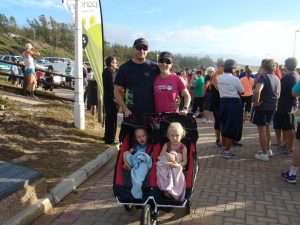 I’ve always enjoyed eating a healthy, balanced diet and exercising on a regular basis. Taking good care of the one and only body I’ve been entrusted with just feels good, and being able to run around and have fun with my family feels even better. During my first pregnancy, many moms warned me that my kids would never eat the healthy food that I keep in my house. Viennas, biscuits [cookies] and fish fingers would soon become our new household staples. “It’s all they’ll eat,” they said. I just shrugged, smiled, and refused to budge. How on earth have we come to believe that nutritious, delicious foods are somehow inferior to, or less tasty than, overly-processed, unhealthy products?
I’ve always enjoyed eating a healthy, balanced diet and exercising on a regular basis. Taking good care of the one and only body I’ve been entrusted with just feels good, and being able to run around and have fun with my family feels even better. During my first pregnancy, many moms warned me that my kids would never eat the healthy food that I keep in my house. Viennas, biscuits [cookies] and fish fingers would soon become our new household staples. “It’s all they’ll eat,” they said. I just shrugged, smiled, and refused to budge. How on earth have we come to believe that nutritious, delicious foods are somehow inferior to, or less tasty than, overly-processed, unhealthy products?
And since when are kids the dictators?
(more…)
Karien Potgieter is a full-time working mom of two toddlers. She has a master’s degree in ecology and works in the conservation sector in beautiful South Africa. Her other big passion, apart from her family and caring for the environment, is running. To date she’s participated in races on three continents and in six countries and she dreams of travelling to and running in many, many more. You can follow her and her family’s running adventures on her blog, Running the Race (http://www.runningtherace.co.za).
More Posts - Website
Follow Me:





by Nadege Nicoll | Apr 8, 2015 | 2015, Family, Humor, Kids, Life Balance, Motherhood, Nadege Nicoll, Older Children, Parenting, Time, Toys, World Motherhood, Younger Children

Science can explain everything in a mom’s life. All that nerdy mumbo jumbo is not just about the universe, or the evolution of mankind. Sure, it’s somewhat nice that we are able to send shuttles in space, produce electricity and retrace the origins of mankind. But the true use of science is for moms, to make sense of their day. And here are a few examples where you use science without even knowing it. (more…)
Nadege Nicoll was born in France but now lives permanently in New Jersey with her family. She stopped working in the corporate world to raise her three children and multiple pets, thus secretly gathering material for her books. She writes humorous fictions for kids aged 8 to 12. She published her first chapter book, “Living with Grown-Ups: Raising Parents” in March 2013. Her second volume in the series just came out in October 2013. “Living with Grown-Ups: Duties and Responsibilities” Both books take an amusing look at parents’ inconsistent behaviors, seen from the perspective of kids. Nadege hopes that with her work, children will embrace reading and adults will re-discover the children side of parenthood. Nadege has a few more volumes ready to print, so watch this space…
More Posts - Website
Follow Me:


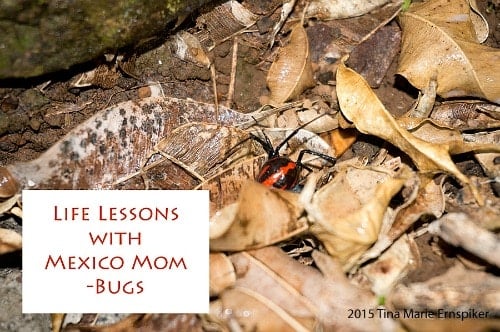
by Tina Marie Ernspiker | Mar 27, 2015 | 2015, Expat Life, Home, Kids, Life Lesson, Living Abroad, Mexico, Moving, Parenting, World Motherhood, Younger Children

As a wife of one and a mom of four, it seems like I am always learning and discovering! I know I am not alone. Let’s just admit it: The world is a big place, life is a lesson, and children can be the best teachers. Normally my series, Life Lessons with Mexico Mom, is hosted on Los Gringos Locos, but today I am posting here on World Moms Blog.
This week’s life lessons are all about bugs. Spiders, cockroaches, bees, and scorpions…oh my! Yikes! Our new home in Uruapan, Michoacan, Mexico was vacant for three years before we moved in last month. The bugs were having a field day, then we arrived. They officially declared our move an invasion and initiated a full scale assault. Our comeback was fumigating with a strong pesticide. Here are my insights and experiences as a Mexico Mom, living with bugs:
Life Lesson 59: I hate Mexican cockroaches just as much as U.S. cockroaches. I don’t know exactly what it is about cockroaches but I hate these creepy, crawly critters. They give me the chills. Maybe it’s because they are associated with rotten food. At least in my mind, I associate them with rotten food. They skittle about and come in all sizes. We have some big ones in Mexico!
Life Lesson 60: Bees go to light just like moths. We have bees on our roof beneath the clay tiles. Someone obviously tried to smoke the hive and get rid of them but it didn’t work. At night the bees go to light. The street light over our balcony, our bedroom light, and our bathroom light. Mr. Curious, aka Tristan, stepped on one and got stung. He is not allergic so no serious damage was done 🙁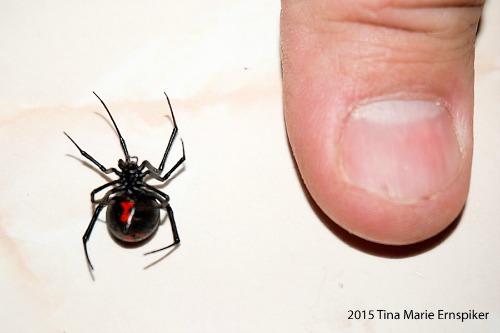
Life Lesson 61: Scorpions are part of the Arachnid class just like spiders. They both have eight appendages. We have seen three scorpions in our house. They were taking a leisurely stroll, till they met the bottom of a shoe. One was smaller then my pinkie nail. We also have our share of spiders. The best one being the giant Black Widow you see in the photos. We watched her die. Her struggle was sad but I can’t imagine what she could have done to one of the kids. I dislike spiders almost as much as cockroaches!
What life lessons did you learn this past week? Please share it with us below. We want to hear your thoughts from around the world!
This is an original post to World Moms Blog by Tina Marie Ernspiker. Tina can be found blogging over at Los Gringos Locos. She is also on Facebook and Twitter.
Photo credits to the author.

by Ecoziva (Brazil) | Mar 26, 2015 | 2015, Awareness, Being Thankful, Brazil, Environment, Family, Gardening, Gratefulness, Home, Inspirational, Kids, Life, Life Balance, Marriage, Motherhood, Moving, Nature, Parenting, Relocating, Stress, Weather, World Motherhood
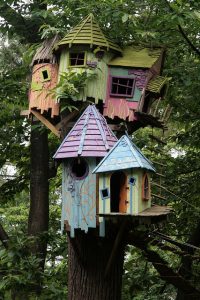 When we first married we lived in an apartment in the heart of a big metropolis. It was practical to live near everything we needed and be able to do all of our errands by foot or bus (in fact, we had no car and walked to work). However, we missed having green. We started looking for a house in a nice region on the outskirts of the metropolitan area, near a forest reservation.
When we first married we lived in an apartment in the heart of a big metropolis. It was practical to live near everything we needed and be able to do all of our errands by foot or bus (in fact, we had no car and walked to work). However, we missed having green. We started looking for a house in a nice region on the outskirts of the metropolitan area, near a forest reservation.
When we finally found a place we could afford to rent it wasn’t exactly your typical house. The owner had built two tiny guest houses in the back of a property he had initially planned to build a regular house in the front of later on; but that never happened.
On the upside we were living glued to a fragment of Atlantic rainforest and our son now had a huge garden to play in. On the downside, the house wasn’t exactly practical.
One of the guest houses had two rooms, a kitchen and a terrace. There we installed our son’s room and ours. However, the kitchen was so small it would only fit the fridge OR the stove, so we had to put the fridge in the second guesthouse and crossover all the time, sun or rain.
The second guesthouse, in turn, had a living room/terrace, one room (which became our library/office), the main bathroom and a pantry of sorts (we squeezed in the fridge instead). The roof had no lining, which wouldn’t be a problem if we didn’t have constant animal visitors coming in (lots of funny stories about that!).
Later on, when we were able to buy the our place, we decided to apply our limited funds to adapt the two guesthouses. An architect friend did his best to join them together into a single, more conventional house.
Our bedroom was expanded and incorporated the tiny kitchen and part of the terrace. A living room was built to join the two houses, which took the shape of a “J”. The main bathroom and former pantry gave place to the new kitchen. Part of the terrace became the laundry room. We lined the roof, installed mold-proof open wardrobes, and installed a large bathtub where our two other children were later to be born.
Nevertheless, all of this did not happen at one time. As I said, we had limited funds and every time these funds began to wane we had to stop.
At three different and stressful moments a lot of work was done in the house, including once, when during three very challenging months, we had to live at my mother-in-law’s.
Now, years later, we still live in a very unconventional house.
Besides the bedrooms, we never put in windowpanes or doors. The terrace/living room still opens completely into the forest – a curse and a blessing all at once! And even though our financial situation has improved considerably over the past few years, it has been four years since our last attempt at home improvement.
Aside from the occasional efforts to clean/fix the roof from the huge amount of leaves we get, we haven’t done much. Every time we think of all the stress involved we decide to postpone any kind of big project.
Despite everything, I love my house and its garden. I believe things will get better as our children grow older and we have more time and energy for housekeeping and improvement. My husband, on the other hand, thinks there is no way to make this house work and we should just move elsewhere, even though he also loves the closeness to the forest. The truth is he would like to live on a small farm, although I have safety concerns. Thus, every once in a while we go house or farm hunting.
Stay tuned! Part 2 coming soon…
How about you, what are your stories with house remodeling and moving? Please share below?
This is part 1 of a two part, original post to World Moms Blog from our contributor and mom of three in Brazil, Ecoziva.
The image used in this post is attributed to Karen Roe. It carries a Flickr Creative Commons attribution license.
Eco, from the greek oikos means home; Ziva has many meanings and roots, including Hebrew (brilliance, light), Slovenian (goddess of life) and Sanskrit (blessing). In Brazil, where EcoZiva has lived for most of her life, giving birth is often termed “giving the light”; thus, she thought, a mother is “home to light” during the nine months of pregnancy, and so the penname EcoZiva came to be for World Moms Blog.
Born in the USA in a multi-ethnic extended family, EcoZiva is married and the mother of two boys (aged 12 and three) and a five-year-old girl and a three yearboy. She is trained as a biologist and presently an university researcher/professor, but also a volunteer at the local environmental movement.
More Posts
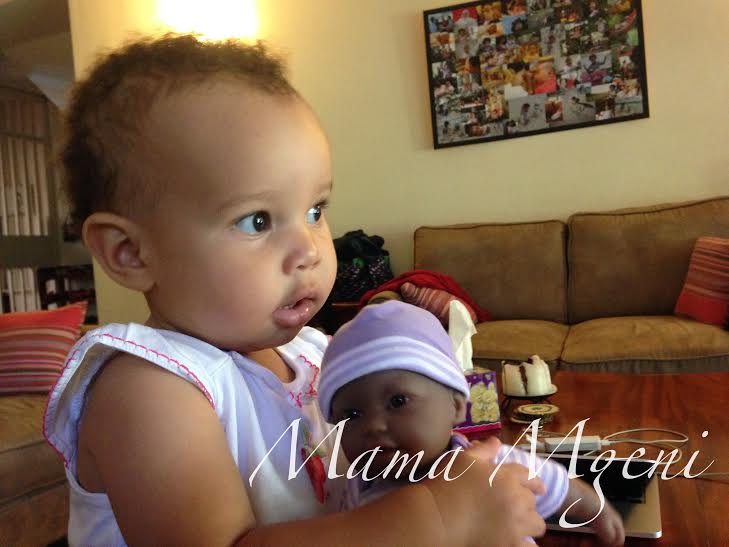
by Tara Wambugu | Mar 25, 2015 | 2015, Africa, Body Image, Guest Post, Identity, Kenya, Kids, Race, Tara Wambugu, Toys, World Motherhood, Younger Children
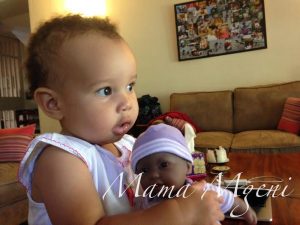
Today we welcome a guest post from Tara, who is writing from Kenya. You can follow her adventures in parenting at mamamgeni.com, where she blogs about raising her family with one foot in the expat world and the other firmly planted in her husband’s homeland. As she recently discovered, finding a black doll was no easy task–in either place.
“Mommy, there are three black people and one white person in our family.” My eldest daughter enjoys pointing out the obvious. She’s referring to me (white American), my husband (black Kenyan), and her baby sister (mixed-race, just like she is). She fully identifies as black, and has recently been expressing interest in race and skin color. We want our kids to explore their cultural and racial identities, and we try to ensure our toys and books reflect the richness of both of our cultures.
My youngest recently turned one, and we decided to get her a baby doll for her birthday. More specifically, we wanted to get her a black baby doll. Should be easy, right? We live in Kenya. No, not easy. THERE ARE ALMOST NO BLACK DOLLS HERE. Whenever you see Kenyan kids playing with dolls, they are almost always little white dolls with blonde hair. White baby dolls, white Barbies, white, white, white. You can find some nice black dolls handmade out of cloth, but they tend to be mommy dolls with babies on their backs. I was looking for a realistic baby, something she could cuddle and take care of, a baby of her own.
Since I was having no luck finding what I was looking for in Kenya, I decided to look for a black baby doll while I was in the US on a recent visit. My family lives in a greater metro area that is over 50% African American. I went to a local department store, and sought out the doll section. I expected to see a choice of dolls from different ethnicities (at least black and white dolls, given the racial make-up of the city). I was wrong – there was nothing but white dolls. Row upon row of white dolls. Blonde-haired, blue-eyed white dolls. Dozens of pink boxes with white dolls inside. Not the kind of dolls I was looking for.
Why was this so hard?
In the end, I decided to search online for a black baby doll, and found one that I loved. My daughter loves it too… She walks around the house, patting her baby’s back, swaying back and forth with a big grin on her face. I had some Kenyan colleagues at my house recently, and they asked where I had found our black doll. I told them my story, and together we lamented the fact that there were so few black dolls available in a predominantly black country.
There is a market for this kind of toy here, and someone is missing out on a serious business opportunity!
It is really important to me that my children have dolls and books that reflect who they are. My eldest is always looking for people who have skin like hers, or hair like hers.
She yearns to identify with a group of people. Having black baby dolls and books featuring black characters makes a difference. Dolls may be “just toys,” but they can mean so much more to a young girl who longs to connect and identify with others like her. What are dolls like in the country where you live? Do they reflect how the people look, or are they different in any way?
This is an original post to World Moms Blog by Mama Mgeni of Kenya.
Photo credit to Mama Mgeni.
Tara Wambugu is a wife, a mother of two, and a Kenya-based lifestyle blogger covering parenting, family life, travel, and more. A former aid worker, Tara has worked in various countries in Europe, Central Asia, Africa, and Central America. She is now a stay-at-home mom living in Nairobi with her husband and their two sassy little girls. You can follow Tara and her family’s adventures on her blog, Mama Mgeni.
More Posts - Website
Follow Me:






by Jennifer Iacovelli | Mar 24, 2015 | 2015, Awareness, Kids, Social Good, Water, World Voice
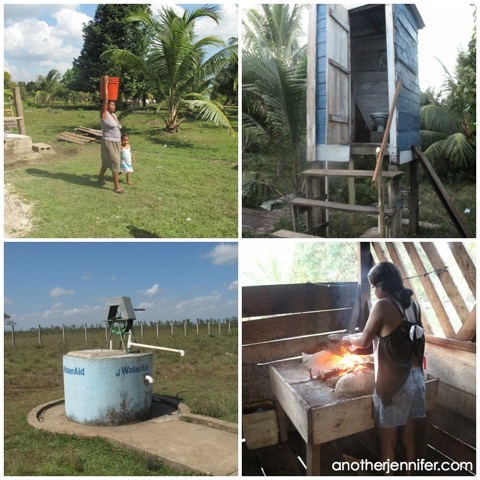 Sunday, March 22nd was World Water Day, a day to celebrate water and bring awareness to the fact that far too many people still lack access to safe water and toilets.
Sunday, March 22nd was World Water Day, a day to celebrate water and bring awareness to the fact that far too many people still lack access to safe water and toilets.
One in ten of the world’s population lives without safe drinking water and 40% do not have adequate sanitation. These statistics are staggering to me considering water is our most precious resource. Water is life. How could something so simple be so scarce for so many people on our planet?
I traveled to Nicaragua last year during World Water Day and spent a week with WaterAid America seeing their work on the ground in the remote indigenous communities there. It was a life-changing trip that taught me how much we take for granted here in the United States.
I got to spend time with a woman named Linda who opened up her house to me and my team. Linda’s home had no electricity or running water, yet she made us feel comfortable. We watched as she used the skills she learned from WaterAid to build and maintain wells for her community. These skills helped her earn money so she could buy her children basic things like shoes and books for school. She’s like any other mother, wanting to provide for her children first.
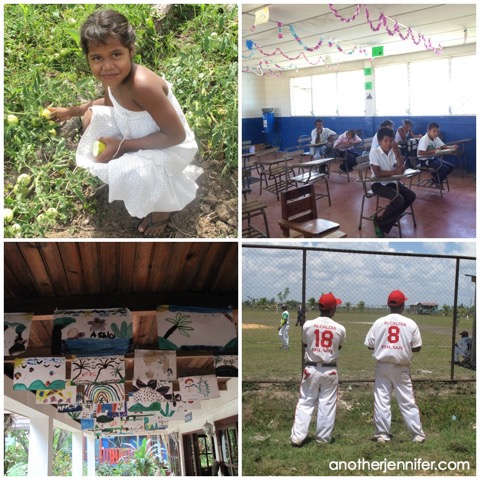
We slept under mosquito nets and ate food cooked over a fire with only the light of a headlamp once the sun went down. We used the toilet Linda built outside her home and dodged wandering farm animals as we walked. Linda took us to see where she keeps her crops via a dugout canoe. Her granddaughter, Exelia, collected vegetables and flowers in her dress, handing me some of my own every so often. We did not speak the same language, but we could communicate.
When I got back from my trip, I wrote about it on my blog and I talked about it a lot with my kids. I wanted them to understand that life in other countries does not always look and feel the same as ours. When I realized World Water Day was coming this year, I asked their teachers if I could come in and talk about the importance of water and toilets in our lives. They welcomed me with open arms.
My youngest is in kindergarten and my oldest is in fourth grade. To cut down on the inevitable giggles that might come from too much “potty talk,” I decided to take the simple approach of showing the kids photos from my trip. They reacted to the photos and asked lots of questions. I chose photos that showed the type of toilets, wells and catchment systems that were being built by the people of Nicaragua with the help of WaterAid America.
We talked about how diseases can spread if people don’t have a clean and sanitary place to go to the bathroom or if you don’t practice good hygiene. We talked about the need to build more wells and systems so that women and girls could spend their days working and going to school instead of walking for miles to fetch water. We talked about how unsafe water can make people very sick and how water filtration systems could help.
I also showed photos of kids in school and swimming, baseball players, toothbrushes and children’s artwork. We talked about how while the kids might live differently in Nicaragua, they were still very much like them. They laughed and played and enjoyed things like baseball and drawing. The fourth graders smartly wondered if they could use the wind, water and sun to help power the communities I had visited. They quickly understood that developing countries might not have enough money and resources to replicate what we have in America. In both classrooms, we talked about how if we know about the problems in the world and we already are living with solutions, we could share that knowledge with others and help.
Even elementary schools kids can be global citizens.
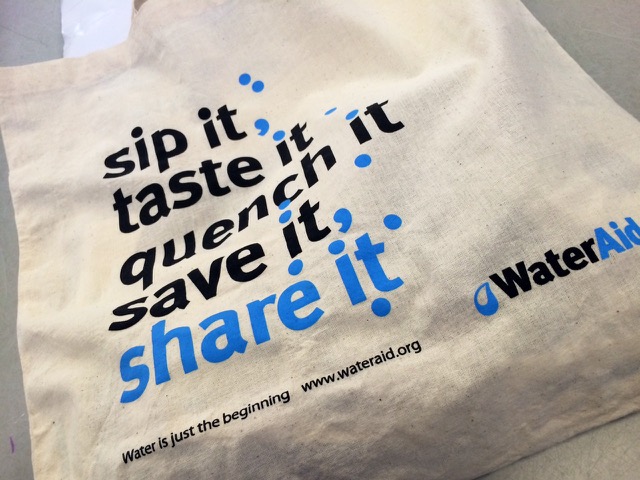
This is an original post written for World Moms Blog by Jennifer Iacovelli of Anotherjennifer.
Do you think your kids understand how precious our water resources are?
Jennifer Iacovelli is a writer, speaker and nonprofit professional. Based in Brunswick, Maine, she’s a proud single mom of two boys and one Siberian husky. Jennifer is the author of the Another Jennifer blog and creator of the Simple Giving Lab. Jennifer is also a contributing author of the book The Mother Of All Meltdowns. Her work has been featured on GOOD, BlogHer, USAID Impact, Feed the Future and the PSI Impact blog. Her latest book, Simple Giving: Easy Ways to Give Every Day, is available everywhere. Her passions are writing, philanthropy, her awesome kids and bacon, though not necessarily in that order.
More Posts

 I’ve always enjoyed eating a healthy, balanced diet and exercising on a regular basis. Taking good care of the one and only body I’ve been entrusted with just feels good, and being able to run around and have fun with my family feels even better. During my first pregnancy, many moms warned me that my kids would never eat the healthy food that I keep in my house. Viennas, biscuits [cookies] and fish fingers would soon become our new household staples. “It’s all they’ll eat,” they said. I just shrugged, smiled, and refused to budge. How on earth have we come to believe that nutritious, delicious foods are somehow inferior to, or less tasty than, overly-processed, unhealthy products?
I’ve always enjoyed eating a healthy, balanced diet and exercising on a regular basis. Taking good care of the one and only body I’ve been entrusted with just feels good, and being able to run around and have fun with my family feels even better. During my first pregnancy, many moms warned me that my kids would never eat the healthy food that I keep in my house. Viennas, biscuits [cookies] and fish fingers would soon become our new household staples. “It’s all they’ll eat,” they said. I just shrugged, smiled, and refused to budge. How on earth have we come to believe that nutritious, delicious foods are somehow inferior to, or less tasty than, overly-processed, unhealthy products?


















 Sunday, March 22nd was World Water Day, a day to celebrate water and bring awareness to the fact that far too many people still lack access to safe water and toilets.
Sunday, March 22nd was World Water Day, a day to celebrate water and bring awareness to the fact that far too many people still lack access to safe water and toilets.




